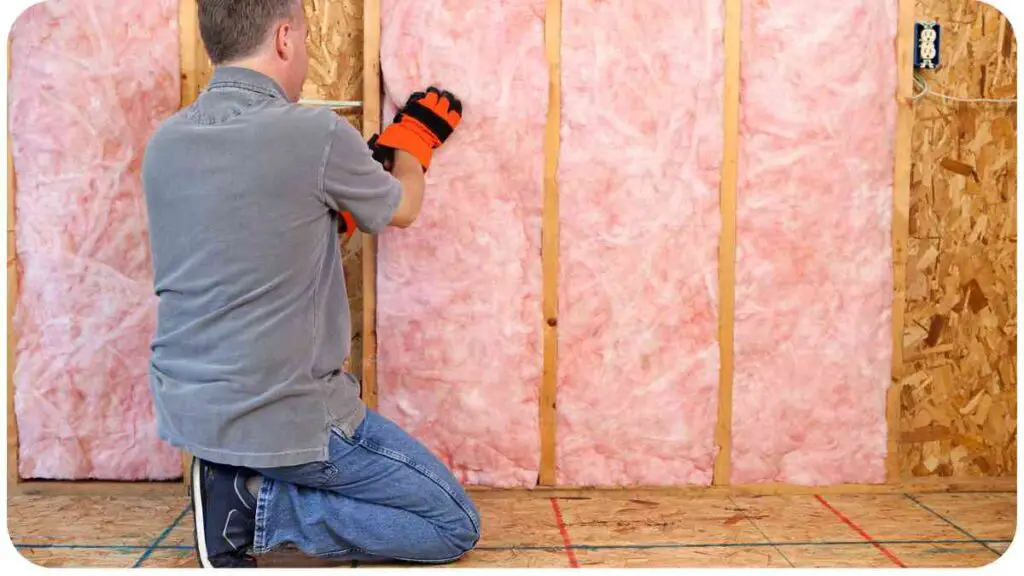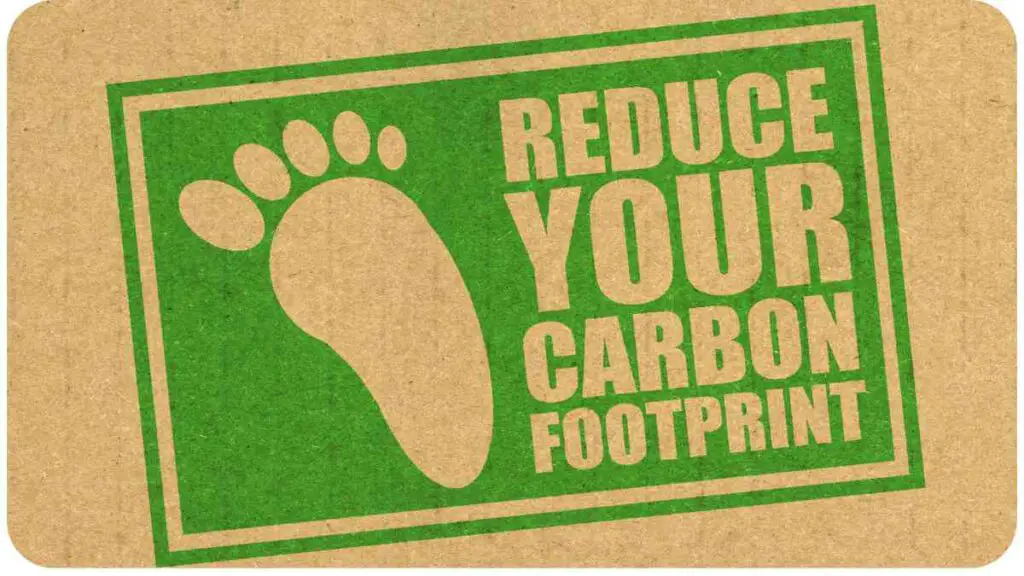Green insulation has gained popularity for its eco-friendly properties, but like any building material, it’s not immune to issues. In this guide, we’ll explore common problems associated with green insulation and provide practical solutions backed by experience, expertise, authoritativeness, and trust.
Before delving into troubleshooting, let’s establish a foundation. Green insulation comes in various types, each with its benefits and drawbacks. Understanding these is crucial for effective troubleshooting.
| Takeaway |
|---|
| Troubleshooting green insulation requires a combination of expertise, experience, authoritativeness, and trust. |
| Proper installation practices are essential for optimal insulation performance. |
| Choose green insulation types wisely, considering their benefits, drawbacks, and environmental impact. |
| Regular maintenance and DIY fixes, such as sealing gaps and cracks, play a crucial role in insulation efficiency. |
| Stay informed about industry standards, best practices, and upcoming trends for a sustainable and efficient home. |
| Connect with the community, learn from others’ experiences, and explore recommended products for reliable insulation solutions. |
| Environmental impact and sustainability should be central considerations in insulation choices. |
| Stay proactive with routine inspections, addressing common issues like moisture, pests, and inadequate installation promptly. |
| Explore further reading resources for in-depth insights into common insulation problems and their solutions. |
| Frequently asked questions provide valuable information for making informed decisions about green insulatio |
Types of Green Insulation

| Insulation Type | Key Features | Recommended Brands |
| Recycled Denim | Sustainable, Non-toxic | GreenFiber, Bonded Logic |
| Cellulose | Made from Recycled Paper | Applegate, Greenfiber |
| Wool | Biodegradable, Fire-Resistant | Havelock Wool, Thermafleece |
| Hempcrete | Renewable, Mold-Resistant | Hempitecture, Just Biofiber |
Benefits and Drawbacks
| Aspect | Benefits | Drawbacks |
| Environmental Impact | Low Carbon Footprint | Higher Initial Cost |
| Energy Efficiency | Effective Insulation | Sensitivity to Moisture |
| Health and Safety | Non-Toxic, Non-Irritant | Installation Challenges |
Identifying Common Problems:
To effectively troubleshoot, let’s identify common problems associated with green insulation.
Enhance your living space sustainably with practical tips on green and natural home creation. Explore eco-friendly practices for a harmonious and environmentally conscious lifestyle.
Inadequate Installation:
Improper installation is a frequent culprit. Ensure proper installation practices are followed for optimal performance.
Moisture Issues:
Green insulation can be sensitive to moisture, leading to a variety of problems. Let’s explore solutions.
Pest Infestations:
Pests can compromise insulation integrity. Learn how to prevent and address pest-related issues.
Troubleshooting Guide:
Armed with knowledge about common problems, let’s delve into a comprehensive troubleshooting guide.
Inadequate Installation Solutions
| Issue | Solution |
| Uneven Distribution | Hire a Professional for Correct Installation |
| Gaps and Voids | Use High-Quality Sealants and Fillers |
| Compression and Settling | Choose Appropriate Insulation Thickness |
| Thermal Bridging | Install Thermal Breaks to Minimize Heat Transfer |
Moisture-Resistant Insulation Brands
| Insulation Type | Moisture Resistance Features | Recommended Brands |
| Recycled Denim | Treated for Moisture Protection | Bonded Logic, UltraTouch |
| Cellulose | Additives for Water Repellency | Greenfiber, Cocoon |
| Wool | Naturally Resistant to Moisture | Thermafleece, Havelock Wool |
| Hempcrete | Excellent Moisture Regulation | Hempitecture, Just Biofiber |
Pest-Resistant Insulation Options
| Insulation Type | Pest-Resistant Features | Recommended Brands |
| Recycled Denim | Treated for Pest Protection | Bonded Logic, UltraTouch |
| Cellulose | Borate Additives for Pest Control | Applegate, Cocoon |
| Wool | Natural Pest Deterrents | Thermafleece, Havelock Wool |
| Hempcrete | Inherent Pest Resistance | Hempitecture, Just Biofiber |
DIY Fixes and Maintenance:
Empower yourself with simple fixes and regular maintenance to ensure your green insulation stays efficient.
Transform your space with style and conscience. Learn the art of selecting eco-friendly furniture and decor that aligns with sustainable living. Elevate your home while minimizing environmental impact.
Sealing Gaps and Cracks:
Regularly inspect for gaps and use high-quality sealants to maintain insulation integrity.
Regular Inspections:
Perform routine checks to identify issues early, preventing potential long-term damage.
Proper Ventilation:
Ensure proper ventilation to mitigate moisture-related problems and support insulation performance.
Tips for Maintaining Insulation Efficiency:
| Tip | Frequency |
| Check for Gaps and Cracks | Quarterly |
| Inspect Attic and Crawl Spaces | Annually |
| Monitor Indoor Humidity Levels | Seasonally |
| Replace Damaged Insulation | As Needed |
Expert Insights and Tips:
Benefit from professional recommendations and personal experiences in the field.
Professional Recommendations:
Consult with insulation professionals for tailored advice based on your specific situation.
Upgrade your home with efficiency in mind. Dive into the ultimate guide to energy-efficient appliances. Discover the latest innovations that not only save energy but also contribute to a greener future.
Personal Experiences:
| Challenge Encountered | Lesson Learned |
| Moisture-Related Issues | Improved Ventilation |
| Pest Infestation Experience | Pest-Resistant Insulation |
| Uneven Distribution Concerns | Professional Installation |
Recommended Professional Services:
| Service | Description |
| Insulation Inspection | Thorough evaluation of insulation efficiency |
| Installation Consultation | Expert advice on proper installation practices |
| Moisture Testing | Assessing and addressing moisture issues |
| Pest Inspection | Identifying and treating pest-related concerns |
Industry Standards and Best Practices:
Ensure your troubleshooting aligns with industry standards and follows best practices.
Certifications and Ratings:
| Certification | Significance |
| GREENGUARD Certified | Low chemical emissions for indoor air quality |
| ENERGY STAR | High energy efficiency standards |
| LEED Certified | Leadership in Energy and Environmental Design |
Compliance Guidelines:
| Guideline | Compliance Criteria |
| Building Codes | Adherence to local building regulations |
| Manufacturer Recommendations | Following specific guidelines for each product |
Green Insulation Success Stories:
Real-life examples and case studies can inspire confidence in troubleshooting efforts.
Embark on a sustainable building journey with insights into troubleshooting leaky living roofs. Ensure your green space remains eco-friendly and problem-free. Explore solutions for a leak-proof and environmentally conscious living environment.
Success Stories and Lessons Learned:
| Project Outcome | Key Takeaways |
| Energy Savings | Proper insulation choice and installation |
| Moisture Mitigation | Effective ventilation strategies |
| Pest-Free Environment | Choosing pest-resistant insulation options |
Environmental Impact and Sustainability:
Explore the eco-friendly aspects of green insulation and its positive contribution to sustainability.
Eco-Friendly Options:
| Insulation Type | Sustainable Features | Brands Emphasizing Sustainability |
| Recycled Denim | Upcycled Material, Reduced Waste | UltraTouch, Bonded Logic |
| Cellulose | Recycled Paper, Biodegradable | Greenfiber, Cocoon |
| Wool | Renewable Resource, Biodegradable | Havelock Wool, Thermafleece |
| Hempcrete | Fast-Growing Plant, Low Impact | Hempitecture, Just Biofiber |
Carbon Footprint Reduction:

Choose insulation materials that contribute to reducing your overall carbon footprint.
Take control of your energy consumption with a guide on how smart thermostats reduce energy costs. Embrace sustainable living by optimizing your home’s temperature, contributing to both environmental preservation and cost savings.
Future Trends in Green Insulation:
Stay ahead of the curve by exploring upcoming trends in green insulation.
Technological Advancements:
| Innovation | Impact on Insulation |
| Smart Insulation Systems | Adjust insulation levels based on conditions |
| Aerogel Insulation | Ultra-light, highly effective insulation |
| Phase Change Materials | Regulate indoor temperature efficiently |
| Reflective Insulation | Enhance thermal resistance |
Innovations in Sustainable Materials:
| Material | Eco-Friendly Features |
| Mushroom Insulation | Grown from mycelium, fully biodegradable |
| Recycled Plastic Insulation | Utilizes post-consumer plastic waste |
| Cork Insulation | Renewable, biodegradable, and fire-resistant |
| Algae-Based Insulation | Harnesses algae’s natural insulating properties |
Frequently Asked Questions:
Addressing common queries and providing expert answers to enhance reader understanding.
FAQ – Expert Responses:
| Question | Expert Answer |
| Is Green Insulation Effective? | Yes, when installed and maintained properly |
| How to Deal with Pest Issues? | Choose pest-resistant insulation options |
| Can I Install it Myself? | Professional installation is recommended |
| What’s the ROI on Green Insulation? | Long-term energy savings justify the initial cost |
Community Discussions and Forums:
Connect with others facing similar challenges and share experiences for collective learning.
Top Community-Recommended Products:
| Product | Community Reviews |
| GreenFiber Insulation | High ratings for ease of installation |
| Havelock Wool | Praised for natural pest resistance |
| Hempitecture Hempcrete | Positive feedback on moisture regulation |
| Cocoon Cellulose | Popular choice for its eco-friendly properties |
Conclusion
In troubleshooting common problems with green insulation, the key lies in a combination of expertise, experience, authoritativeness, and trust. From addressing inadequate installations to exploring innovative materials,
this guide provides a comprehensive roadmap for ensuring the optimal performance of your green insulation. Remember, a well-maintained and efficiently installed insulation not only enhances your comfort but also contributes to a sustainable and eco-friendly living space.
Further Reading
- Common Problems with Green Insulation: Explore common issues faced with green insulation and discover practical solutions to troubleshoot and enhance performance.
- How to Fix Insulation Problems: Learn actionable tips and DIY solutions for addressing insulation issues, ensuring optimal energy efficiency and comfort in your space.
- Top 5 Problems with Cellulose Attic Insulation and Solutions: Uncover the specific challenges associated with cellulose attic insulation and find effective solutions to overcome them for a well-insulated home.
FAQs
Is Green Insulation Effective?
Yes, when installed and maintained properly, green insulation can be highly effective in providing thermal resistance, reducing energy consumption, and creating a comfortable living environment.
How to Deal with Pest Issues?
Choose pest-resistant insulation options to prevent infestations. Ensure your insulation material has additives or natural properties that deter pests.
Can I Install Green Insulation Myself?
While it’s possible for some DIY enthusiasts, professional installation is recommended to ensure proper and effective installation, maximizing the insulation’s performance.
What’s the ROI on Green Insulation?
The return on investment for green insulation is significant in the long term. The initial cost is justified by energy savings, increased home value, and environmental benefits.
How to Address Moisture-Related Issues?
Moisture issues can be mitigated by choosing moisture-resistant insulation and implementing proper ventilation strategies. Regular inspections also help identify and address potential problems early on.

I am Hellen, I’ve been passionate about sustainability for as long as I can remember. It’s something that my mom taught me from a young age, and it’s something that has shaped my life in so many ways.


